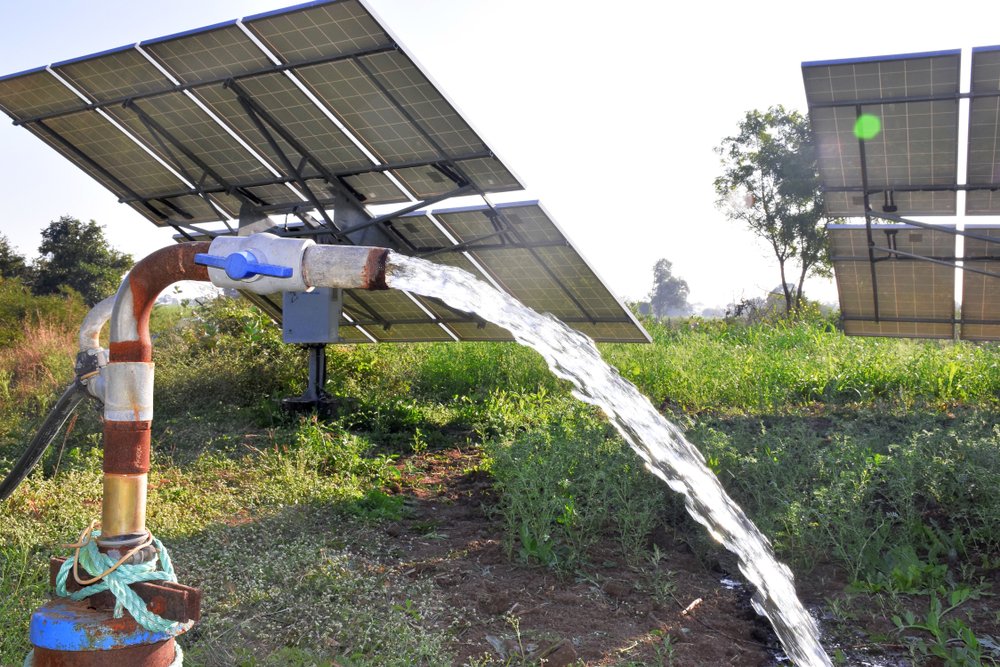
A solar irrigation pump is a system that uses solar energy to power a pump, which draws water from a water source (such as a well, river, or reservoir) and delivers it to agricultural fields for irrigation. Here’s an overview of the typical components and the process involved in setting up a solar irrigation pump system:
Solar irrigation pump systems offer a sustainable and cost-effective solution for providing water to agricultural areas, particularly in remote or off-grid locations where access to electricity may be limited. By harnessing solar energy, these systems can help reduce reliance on fossil fuels and minimize environmental impact while supporting agricultural productivity and food security.
- Solar Panels: Solar panels are installed to capture sunlight and convert it into electrical energy. These panels are typically mounted on a structure (such as a pole or frame) at an angle optimized for maximum sunlight exposure.
- Mounting Structure: A sturdy mounting structure is necessary to support the solar panels and keep them securely in place. The structure should be designed to withstand wind, weather, and other environmental factors.
- Solar Charge Controller: A solar charge controller regulates the voltage and current from the solar panels to ensure that the batteries are charged safely and efficiently. It prevents overcharging and damage to the batteries.
- Batteries: Batteries are used to store the excess energy generated by the solar panels during the day, which can be used to power the pump during periods of low sunlight or at night. Deep-cycle batteries are typically used for solar energy storage due to their ability to withstand frequent charging and discharging cycles.
- Inverter: If the pump is AC-powered, an inverter may be required to convert the DC electricity stored in the batteries into AC electricity suitable for powering the pump motor.
- DC Pump or Pump Controller: Alternatively, a DC pump or a pump controller may be used if the pump operates directly on DC power. DC pumps are often more efficient for solar-powered systems since they eliminate the need for an inverter and reduce energy losses.
- Pump: The pump is the component responsible for drawing water from the water source (such as a well) and delivering it to the irrigation system. The type and size of the pump depend on factors such as the water requirements of the crops, the depth of the water source, and the flow rate needed for irrigation.
- Piping and Distribution System: Pipes, valves, and other components are used to transport water from the pump to the fields being irrigated. The system should be designed to minimize pressure losses and ensure efficient water distribution.
- Controls and Monitoring: Control systems may be installed to automate the operation of the pump based on factors such as sunlight intensity, water demand, and battery status. Monitoring systems can provide real-time data on pump performance, water levels, and energy consumption.
- Installation and Commissioning: The components are installed and connected according to the system design. The system is tested and commissioned to ensure that all components are functioning properly and that the pump is delivering water effectively to the irrigation system.
- Operation and Maintenance: Once installed, the solar irrigation pump system requires regular maintenance to ensure optimal performance and longevity. This includes cleaning the solar panels, inspecting and servicing the pump and other components, and monitoring energy production and water output.
